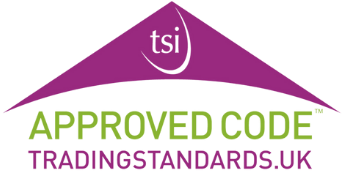Investing in property is becoming increasingly popular in the UK.
If you’ve bought a buy-to-let property in the past, you may be wondering what options are available.
This blog explains the key talking points around selling a buy-to-let property.
What are my options when I own a buy-to-let property?
You have several options when you own a buy-to-let property. You can see a summary of each one below.
Rent it out
Your first option is to keep renting it out. This is presumably what you’ve been doing for the entire period you’ve owned it.
This allows you to keep earning an income from the house. And you’ll benefit from any future increases in its value.
Buy it outright
A second choice is to buy it outright. This is only possible if you can afford to do so.
It usually requires a lump sum of several hundreds of thousands to be available to you.
Sell it
Your third option is to sell your property. This is the focus of this blog.
It involves cashing in on the house’s current value and getting back the equity you’ve built in it.
This means you won’t have any more monthly payments.
How to sell a buy-to-let property
You should follow a few key steps to sell your buy-to-let property. Get guidance from an expert near you if you’re unsure about anything.
Get your house valued
The first thing you need to do is get your house valued. In most cases, its value has probably changed since you first bought it.
Especially if you’ve owned it for several years. You need an updated opinion about how much you can sell it for.
Prepare your house
You’ll then need to prepare for the sale. This involves staging your house to look attractive.
If you’ve got sitting tenants, you should tell them about the forthcoming sale.
Find an estate agent and solicitor
Now, it’s time to find an estate agent and solicitor to support you with the sale.
This is crucial because you need to find a willing buyer – and an expert can help you to achieve this.
They might have a network of cash buyers or existing landlords keen to grow their portfolio.
The legal steps of selling a buy-to-let can be slightly more complicated than usual.
Remember that in a couple of cases, your tenants may have the right of first refusal to your property.
Negotiate on price
Once you host viewings and find a suitable buyer, it’s time to negotiate on price.
This can be challenging if you’ve got sitting tenant because the buyer will want an accurate report about their behaviour. And a survey of the property’s condition.
Can I be forced to sell a buy-to-let property?
Yes, in some cases. The most common example is if you break the terms of your agreement.
This might be living there when you’re not allowed to.
Or perhaps you’ve missed your mortgage repayments. The lender may issue a fine, apply for repossession, or sometimes force you to sell.
You may also feel compelled to sell if the situation gets out of control.
Perhaps you have problem tenants or can no longer afford your repayments. Selling could feel like the only option.
Advantages of selling a buy-to-let property
You could choose to sell your buy-to-let property for a number of reasons.
Reduce your stress
Firstly, selling your house can significantly reduce your stress.
Being a landlord involves a significant time commitment, and you’ll need to navigate the hazards that come with having tenants.
If the people living in your buy-to-let misbehave, this can increase your stress even further. Getting rid of the property takes this off your plate.
Financial benefit
There can be a financial advantage to selling your buy-to-let property if it’s vacant a lot.
A lack of income from tenants living there can make it tricky to meet your mortgage repayments.
If you’ve fallen into arrears, or are struggling to make ends meet, selling can get you out of that hole.
Avoid external issues
Selling your buy-to-let could also be more strategic.
Stamp duty rates have increased recently, making investment in this area less attractive.
Or perhaps the local housing market is predicted to experience a downturn in the near future.
Disadvantages of selling a buy-to-let property
There are drawbacks to selling your buy-to-let property. It’s worth keeping these in mind as well.
Early repayment fee
First, you will often need to pay an early repayment fee.
This is charged by the lender when you terminate your agreement early.
It can thousands of pounds in many cases. This reduces any profit you make from the transaction.
Loss of income
You’ll also say goodbye to your regular income from renting out the house.
This can translate into a reduction in your earnings. You may need to compromise on your lifestyle.
It’s difficult
Selling a buy-to-let can also be extremely difficult in some cases. Many people don’t want to buy a house with sitting tenants.
So, if that applies to you, you may need to find a cash buyer or investor – who could use their position to negotiate for a reduced price.
The problem is compounded if your tenants misbehave. You may face legal issues.
Should you sell my buy-to-let property?
Your personal and financial circumstances will significantly impact whether this is the right choice.
It may be worth getting an independent expert’s guidance, tailored to your situation.
If you’ve still got tenants living in your buy-to-let, it may be challenging to sell it. The process becomes far easier when it’s empty.
The behaviour of your tenants is also worth considering. If they’re well-behaved, the sale will hopefully go smoothly.
You may also want to judge when your house has increased in value. Selling it can seem more attractive if you’re likely to make a sizeable profit.
Plenty of other factors will weigh into your decision. This includes taxation, regulatory changes, and local market conditions.
You may also be keen to reduce the stress in your life – and thus sell off some of your portfolio.




















